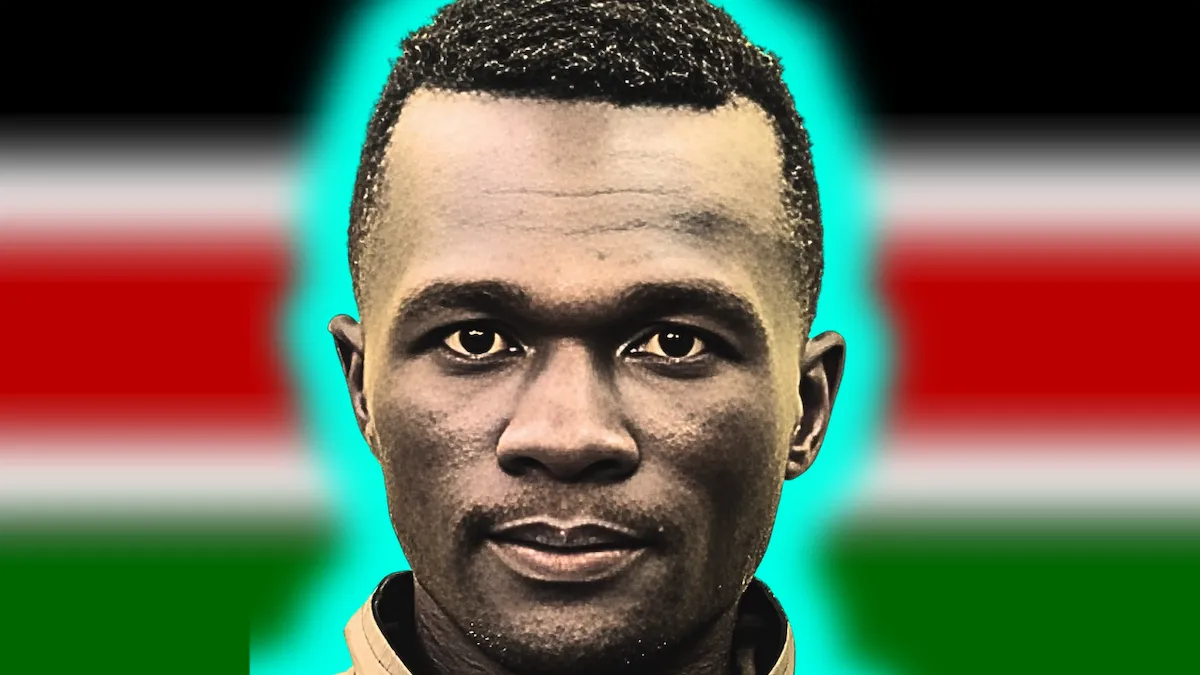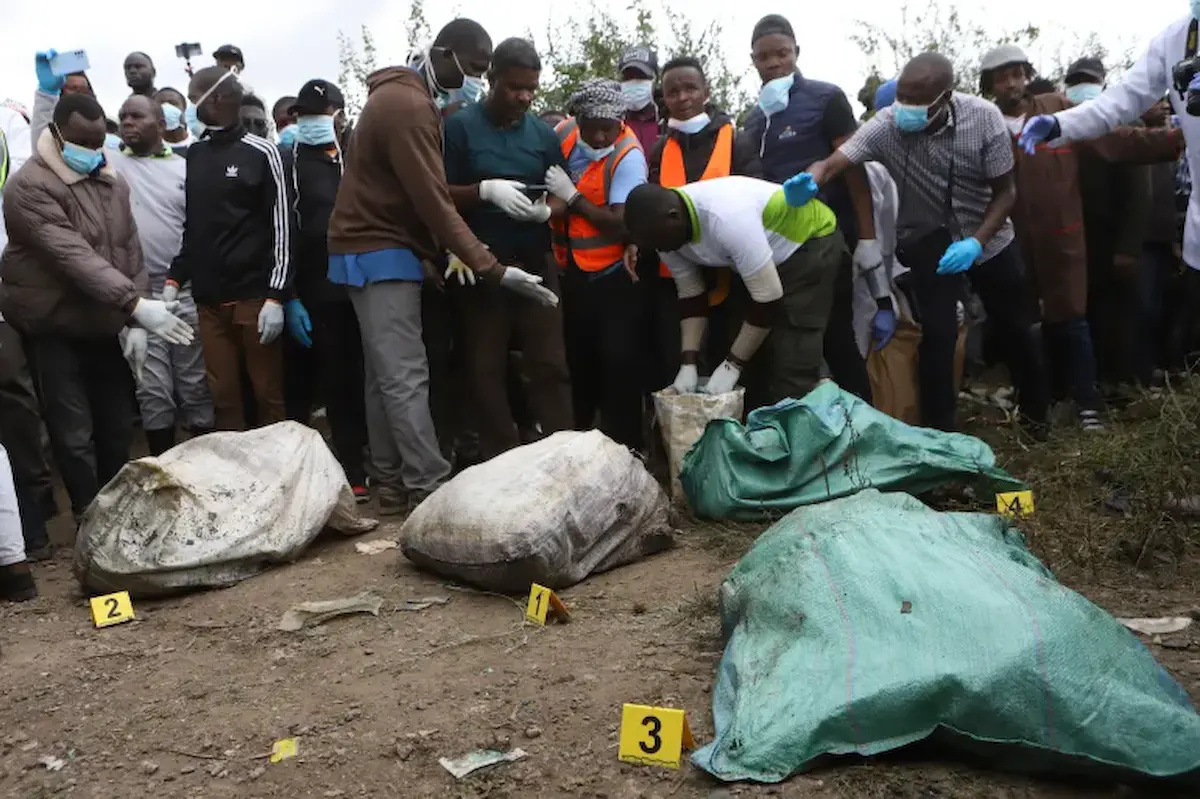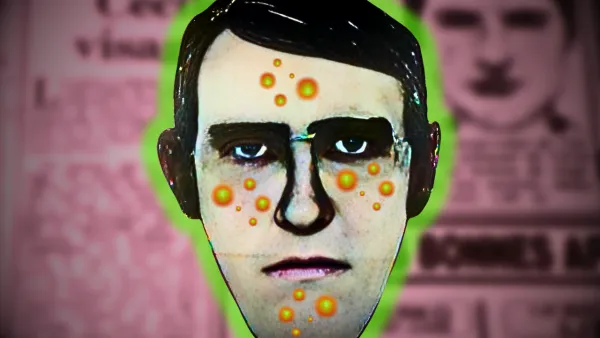The Kenyan Vampire: Inside the Chilling Case of Collins Jumaisi Khalusha
In the sweltering heat of a Nairobi summer, a grisly discovery in an abandoned quarry would shake Kenya to its core and expose a suspected serial killer dubbed "The Kenyan Vampire."

Listen to this article
Recorded with Shure microphone.
What began as one woman's desperate search for her missing sister would unravel into a horrifying saga of mutilated bodies, police corruption, and a cunning predator who managed to evade justice. This is the chilling true story of Collins Jumaisi Khalusha and the trail of death he left behind.
A Sister's Haunting Dream

For 24-year-old Peris Keya, the nightmare began on June 28, 2024. Her older sister, 26-year-old Josephine Owino, left for work that morning as usual from their home in Mukuru Kwa Njenga, a sprawling shantytown on the outskirts of Nairobi. Josephine, a hair braider and mother to a young toddler, never returned.
As days passed with no word from Josephine, Peris grew frantic. She visited multiple police stations, pleading for help, but was met with indifference. "They felt nothing for us," Peris later recounted, describing how she sat for hours cradling her sister's crying child, "shaking with anger" at the lack of concern from authorities.
Then came the dream that would change everything. One night, Peris dreamt that Josephine woke her up and led her toward a hill. Pointing down, Josephine said, "I am inside the water. Please get me out. Please find me and bury me."
Driven by this eerie vision, Peris decided to take matters into her own hands. She enlisted the help of several local men, offering what little money she had, to search a nearby abandoned quarry that had become a dumping ground. As they waded through the thick bed of floating trash, one of the men spotted something horrifying - a sack containing what appeared to be human remains.
Grisly Discoveries in the Quarry

Peris immediately ran to alert the police. A few officers reluctantly accompanied her back to the site, where they watched as more sacks were pulled from the murky waters. By the end of that day, at least 10 sacks had been recovered, containing dismembered limbs, torsos, and only one intact body.
"The bodies, wrapped in bags and secured by nylon ropes, had visible marks of torture and mutilation," police later reported. The victims appeared to be women between 18 and 30 years old, all killed in a similar fashion.
As news of the gruesome finds spread, more families of missing women converged on the area. Among them was the family of 24-year-old Roseline Akoth Ogongo, who had moved to Nairobi just three months earlier in search of a better life.
Roseline's brother recalled how she was always happy, constantly posting videos of herself dancing on TikTok. When they rushed to the morgue to view the recovered remains, they recognized her by the yellow t-shirt she loved to wear. Only her torso lay on the cold metal table.
"I really miss her," Roseline's brother said, his voice breaking as he flipped between a photo of her mutilated body and a video of her dancing in that same yellow shirt.
The Arrest of the "Kenyan Vampire"

As public outrage grew over the murders, police faced mounting pressure to solve the case. On July 17, 2024, they announced a major breakthrough - the arrest of 33-year-old Collins Jumaisi Khalusha, whom they claimed had confessed to killing 42 women over the past two years.
Khalusha was apprehended at a nearby bar where he had been watching the Euro 2024 football final. Police said cellphone forensic analysis had led them to the suspect, whose home was just 100 yards from where the bodies were found.
Investigators described Khalusha as a "vampire" and "psychopath," painting a picture of a remorseless killer who lured women to their deaths before dismembering them and dumping their remains. They claimed he even confessed to murdering his own wife.
But from the start, there were troubling inconsistencies in the case against Khalusha. His swift confession raised suspicions, especially given Kenya's history of police brutality and coerced admissions. Khalusha's attorney, John Maina Ndegwa, alleged that his client had been tortured into confessing.
"Anybody fearing for his or her life would say whatever his oppressors want to hear," Ndegwa stated. "The whole case negates common sense."
Ndegwa also claimed police had blocked him from seeing his client, who was "writhing in pain and needed urgent medical care." When the lawyer was finally granted access, he said Khalusha appeared "in distress, terrified and in anguish."
Adding to the doubts, Khalusha's neighbors expressed shock at the allegations. They described him as a quiet man who mostly kept to himself and sold SIM cards at the local market. While some recalled seeing women visit his small apartment on weekends, they never witnessed any abuse or heard suspicious noises.
"Everyone here knows about everyone else's business," one neighbor insisted. "It's impossible he could have done this without us knowing."
A History of Police Misconduct
The case against Khalusha unfolded against a backdrop of deep mistrust between the Kenyan public and law enforcement. Just weeks earlier, police had killed at least 50 protesters during demonstrations against tax hikes, using live ammunition to disperse crowds. There were also reports of police abducting a journalist covering the protests.
This history of brutality and corruption led many to question whether Khalusha was being used as a convenient scapegoat. Some speculated the murders could be linked to the tax protests or were part of a wider pattern of femicide in Kenya.
Adding fuel to these theories, two other men were arrested in connection with the case, one of whom was found in possession of a slain woman's phone. But authorities continued to focus on Khalusha as the primary suspect.
A Shocking Escape
Just when it seemed the case couldn't get any more bizarre, Khalusha pulled off a daring escape that would leave the nation reeling. In the early hours of August 20, 2024, he and 12 other inmates managed to break out of police custody.
According to reports, the prisoners cut through wire mesh in their cells before scaling the perimeter wall of the station. Their absence wasn't discovered until 5 AM when officers arrived to serve breakfast.
The escape immediately raised suspicions of inside help. "This was a high-value suspect who was to face serious charges," said Mohamed Amin, head of Kenya's Directorate of Criminal Investigations. "We are investigating the incident and will take action accordingly."
In the days that followed, eight police officers were suspended and five were arrested for their alleged roles in facilitating the breakout. Authorities admitted the inmates had likely been "aided by insiders," further eroding public trust in law enforcement.
As of this writing, Khalusha remains at large, leaving Kenyans to wonder whether a dangerous predator is on the loose - or if the real killer was never caught in the first place.
Unanswered Questions

The case of the "Kenyan Vampire" leaves more questions than answers. If Khalusha is indeed guilty, how did he manage to kill so many women undetected, especially given the close proximity of his home to a police station? Why did authorities ignore repeated pleas from families of missing women until bodies began surfacing?
And perhaps most crucially - is the real killer still out there? The botched handling of the investigation and Khalusha's escape mean that closure for the victims' families remains elusive.
What is clear is that this case has exposed deep-rooted issues within Kenya's criminal justice system. From police indifference to allegations of torture and corruption, the saga highlights the urgent need for reform.
For now, the abandoned quarry in Mukuru Kwa Njenga stands as a grim reminder of lives cut short and justice denied. Until the truth is uncovered, the specter of the "Kenyan Vampire" will continue to haunt this community - and an entire nation.
A Trail of Shattered Lives

As the search for answers continues, we're left to contemplate the human toll of this tragedy. Women like Josephine Owino and Roseline Akoth Ogongo came to Nairobi with dreams of a better life, only to fall victim to unimaginable violence. Their families are now left to grapple not only with grief, but with the frustration of a flawed investigation that may never bring them closure.
The case of Collins Jumaisi Khalusha serves as a chilling reminder that sometimes the most dangerous predators hide in plain sight, their true nature concealed behind a mask of normalcy. Whether he is indeed the "Kenyan Vampire" or merely a convenient scapegoat, his story has forever changed the fabric of this community.
As Ann Rule wrote in her seminal work on Ted Bundy, "The Stranger Beside Me," we are often drawn to tales of serial killers because they force us to confront the darkness that can lurk within seemingly ordinary people. The Nairobi murders compel us to ask uncomfortable questions about trust, justice, and the systems meant to protect us.
In the end, perhaps the most important legacy of this case will be in spurring much-needed reforms. Only by confronting the failures exposed here - from police indifference to systemic corruption - can Kenya hope to prevent future tragedies and ensure that no more lives are lost to the shadows.






